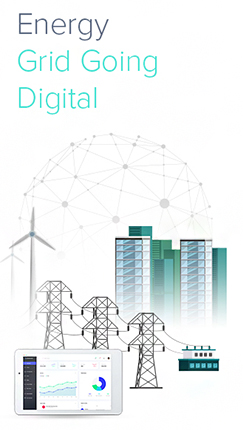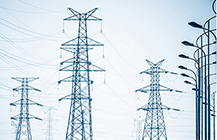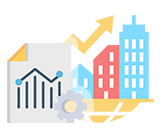Digitization of Energy Grids
Moving ahead in this technology converging era, our Chief Mentor and Host, Pranjal Sharma, Economic Analyst, Advisor, and Author, is in conversation with Viviana Vitto, Head of Market Strategy and Regulatory Analysis, Global infrastructure and networks at Enel discuss how the digitization of the power grid is a blow to the Industry 4.0.
The global marketplace has undergone a significant transformation with all things becoming digital - thanks to the COVID-19 pandemic! This digitalized era sees the rising dependence on advanced technologies. Even though it adds up to the risks associated with security, this is not holding back industries from switching to digital transformation. Given this situation, there has been a widespread demand for technology transitions to ensure a smooth out process.

The energy grid remains one of the greatest engineering wonders of the 20th century. Digitization is the modern industrial revolution, and it is assumed to be the most significant transformation in the energy sector ever since the industrial revolution. It is transforming business functionalities and processes, especially in the energy sector with the need for data interconnectivity, sustainability, better resilience, and the defense against cyber threats.
As Viviana Vitto rightly said that we are facing an incredible transformation due to the transition and analysts have convened that distribution grids would be at the centre of this change. "Grid futurability" is the hook. The combination of the grid transformation in terms of digital components that are merged in the network must be combined with external environments. This will facilitate the grid aspects to be more resilient bringing more opportunities around sustainability. Since the interconnection between the network and all the actors in the sector is higher, innovation is key, and the network should be more inclusive as well as participatory.
Given the current market scenario, the digital management of supply and demand is becoming very critical. Therefore, businesses are required to manage different types of energy sources in the grid. Innovative technologies like AI, IoT, edge computing, etc. are supporting the energy grid platform model and ultimately, improving the capability of grid management and data exchange.
Sustainability is the New Digital
Grid technology is primarily focused on sustainability, as a result, the networks must have more renewables in place to stand out as a matured hosting capacity. In such a situation, it should also be a CO2 absorber to be capable enough to transform itself into a smarter grid. It can help bring value that is optimal in terms of production on CO2 emission alongside circularity. Certainly, digitization in the electric grid enables various opportunities to facilitate smart energy generation, supply, and utilization via a smart grid - which is a standard of digitization in the energy sector.

Presently, there are more than 44 million active smart meters, and using them is one of the best practices - to understand and perform a real-time balance of organization energy usage. In this context, Viviana mentioned in a statement,
Almost A Win-Win Case

Our recent study suggests that the global power grid system market (subsea) is anticipated to reach USD 14.8 billion by 2027. This is from an estimated USD 9.1 billion in 2022, with a CAGR of nearly 10.2% during the forecasted period. As we advance, the market is likely to be adopted fast spanning countries and industries. With more acknowledgment and expertise around implementation and execution, it can lead to remarkable opportunities and benefits.
Investment in Technology
Digitization plays its role in ensuring that power grids keep up with demand. And this is a contribution that one can give to the decarbonization path together with the capability of the network to be more technologically ready for the transformation that is given by the transition.

- Tune into:
-
 Apple
Apple
-
 Spotify
Spotify
-
 Amazon Music
Amazon Music

